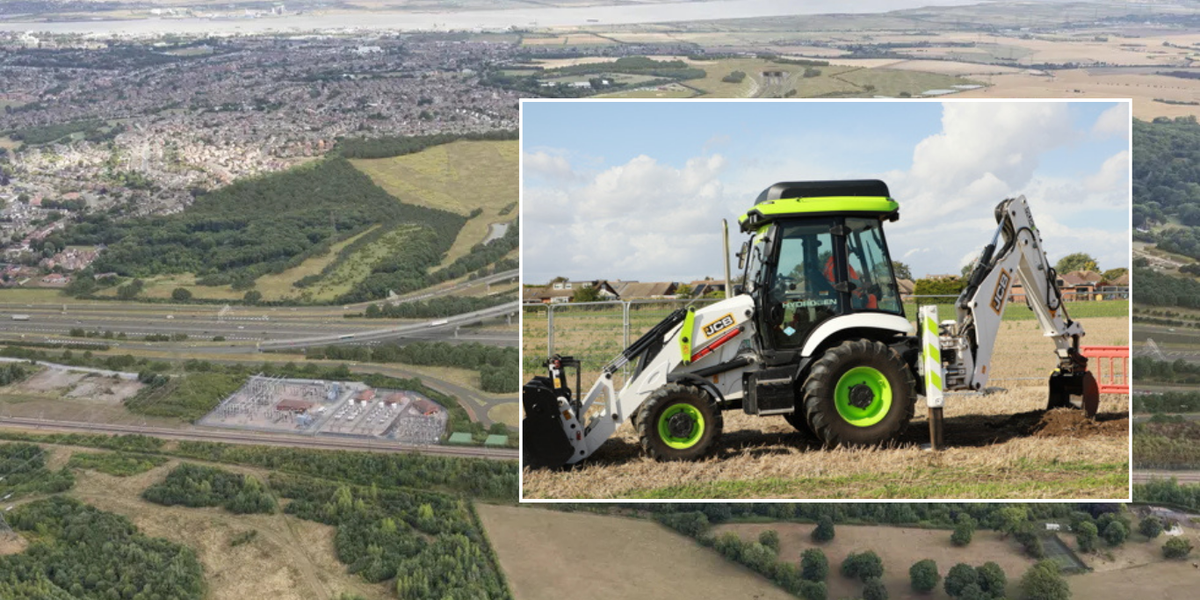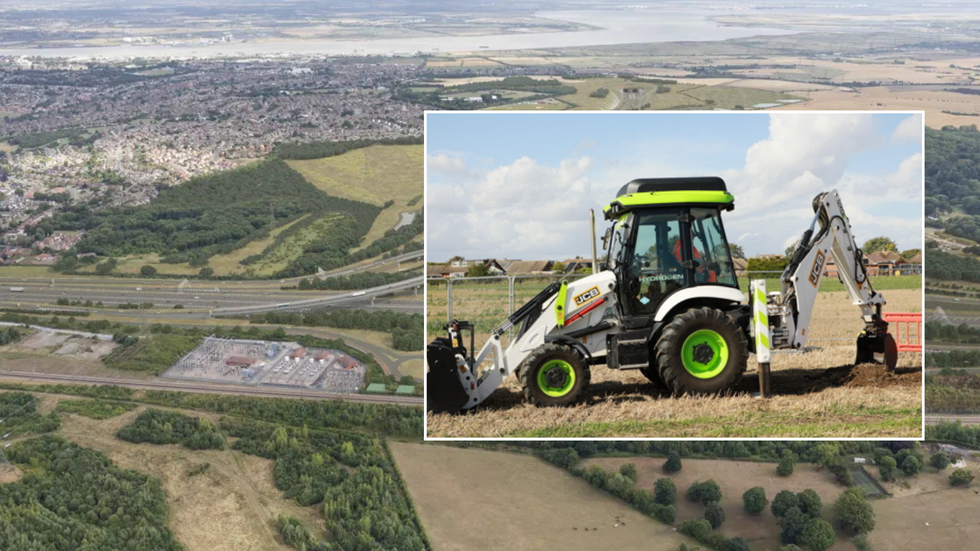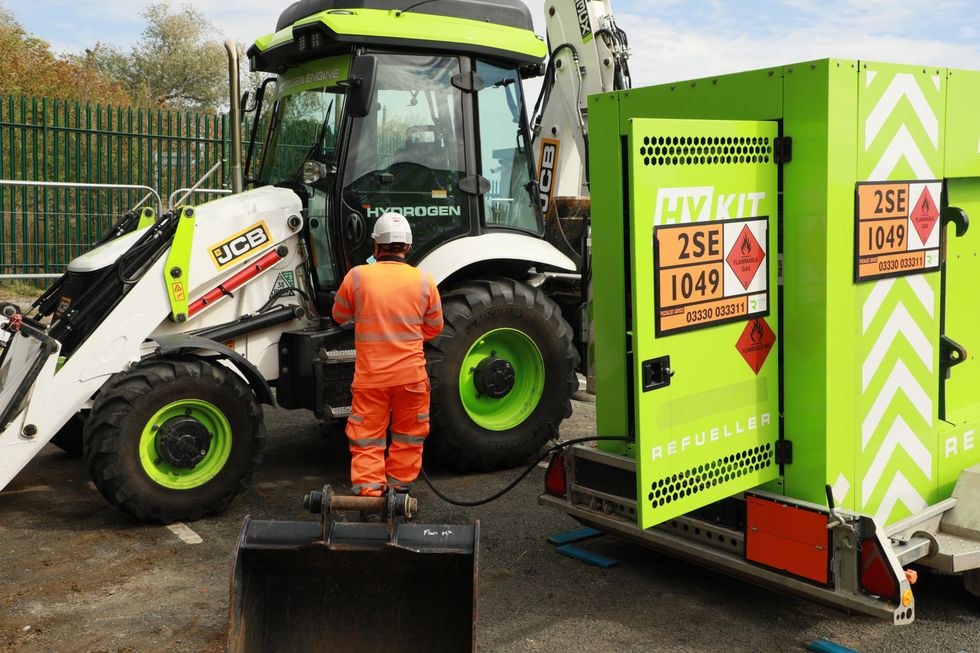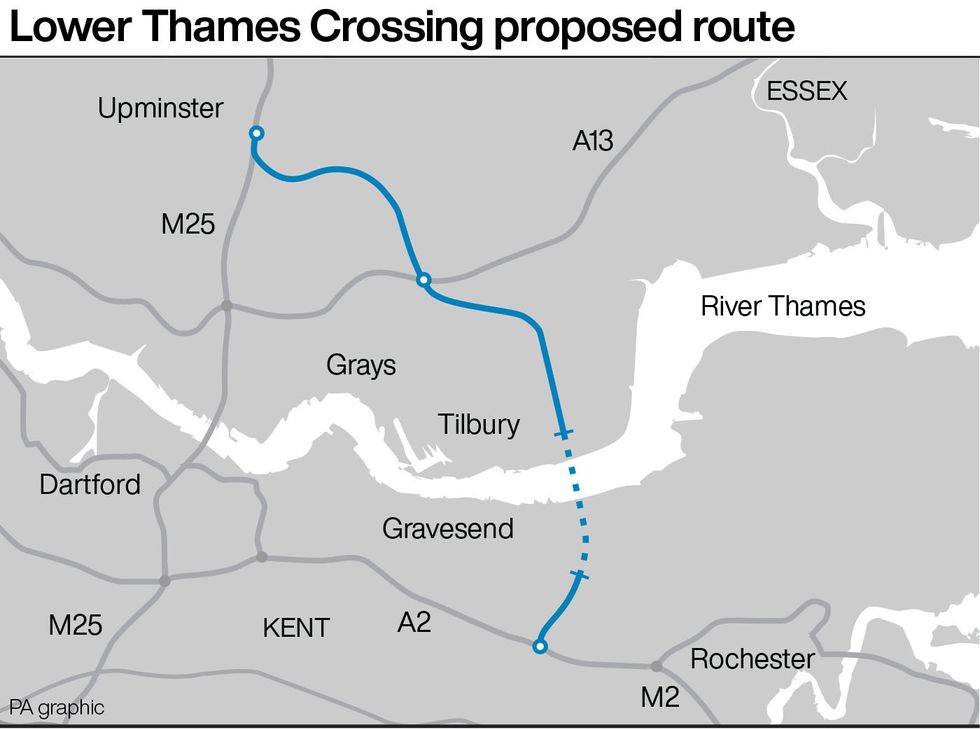



A major road project across the southeast has moved one step closer after National Highways announced fresh updates ahead of the opening in 2032.
The groundbreaking development has emerged at the Lower Thames Crossing construction site, where the world's first hydrogen-powered excavator has begun operations outside a testing environment.
National Highways revealed that the major infrastructure scheme will become Britain's first carbon-neutral construction project.
The British-manufactured JCB hydrogen digger has begun conducting survey work near Gravesend in Kent, marking a significant advancement in sustainable construction practices.
The deployment represents a crucial step forward for the £1billion road and tunnel project, which gained planning approval in March.
The initiative forms part of the crossing's ambitious environmental strategy, positioning the development as a pioneer in combining economic growth with net-zero objectives.
Skanska, the delivery partner constructing the Kent portion of the route, will be utilising the hydrogen-powered machine for ground investigation surveys.
The equipment, supplied by Flannery Plant Hire with hydrogen fuel from Ryze, has already prevented more than one tonne of CO2 emissions during its initial four weeks of operation.

The Lower Thames Crossing would connect to the A2 and M2 in Kent
|NATIONAL HIGHWAYS
The deployment follows successful trials at Gallagher's Hermitage Quarry in Kent earlier this year.
JCB's machine is currently undergoing final testing and validation, with full-scale production scheduled to commence at the company's Staffordshire facility in Rocester during 2026.
Steve Fox, JCB's Managing Director for Global Major Accounts, said: "This is a huge milestone for the construction industry.
"For the first time on a major infrastructure project, hydrogen has proven its worth on site as a carbon-neutral fuel in a working JCB construction machine."
The project has secured a legal commitment to achieve carbon neutrality by implementing responsible offsetting practices for any residual emissions, though only after exhausting all reduction efforts during construction in the early 2030s.
The scheme aims to slash its construction carbon footprint by 70 per cent through refined design approaches and innovative materials.

National Highways hopes the Lower Thames Crossing will become the greenest road project
|NATIONAL HIGHWAYS
The new road project hopes to alleviate pressure on the Dartford Crossing, which currently handles over 150,000 vehicles daily, despite being designed for just 135,000.
This vital trade route, which opened its first tunnel in 1963, experiences severe congestion that costs the UK economy more than £200million annually in lost time.
As the sole road crossing east of London, compared to 16 crossings between Blackwall Tunnel and west London, it carries over 50 million vehicles yearly, with nearly 40 per cent being goods vehicles.
The crossing serves crucial ports including Tilbury, Dover, London Gateway and Medway.
During evening peak hours northbound, 19 out of 20 journeys face delays, with two-thirds taking twice the expected duration.
The crossing requires 300 staff, including 100 traffic officers, working around the clock to manage just one mile of road.
 Lower Thames Crossing proposed route | PA
Lower Thames Crossing proposed route | PA
Roads and Buses Minister Simon Lightwood said: "The government-backed Lower Thames Crossing will slash journey times for motorists, as well as our vital freight industry.
“Its construction will also be completely carbon neutral, showing major infrastructure projects can be delivered hand in hand with our ambitious environmental targets."
Meanwhile, Matt Palmer, National Highways Executive Director for Lower Thames Crossing, explained that the commitment to being carbon neutral and restoring nature will “prove that the British construction industry has the vision and skills to build the projects needed to drive growth in a way that enhances, not impacts, the local environment".
The crossing plans to become the UK's most environmentally friendly road by establishing six times more green space than tarmac.
The development includes planting one million trees, creating new woodland, two public parks, a wetland habitat for birds and 40 miles of pathways for pedestrians, cyclists and equestrians.
